Discover 20 hidden attractions, cool sights, and unusual things to do in Albany (Australia). Don't miss out on these must-see attractions: Princess Royal Fortress, Albany Convict Gaol, and Memorial Park Cemetery. Also, be sure to include Patrick Taylor Cottage in your itinerary.
Below, you can find the list of the most amazing places you should visit in Albany (Western Australia).
Table of Contents
Princess Royal Fortress

Museum in Mount Clarence, Australia. Princess Royal Fortress also known as Albany Forts was a fortress on the northern shore of Atatürk entrance on Princess Royal Harbour on Mount Adelaide overlooking King George Sound in Albany, Western Australia. It now operates as a museum.[1]
Address: 67 Forts Rd, 6331 Mount Clarence
Albany Convict Gaol
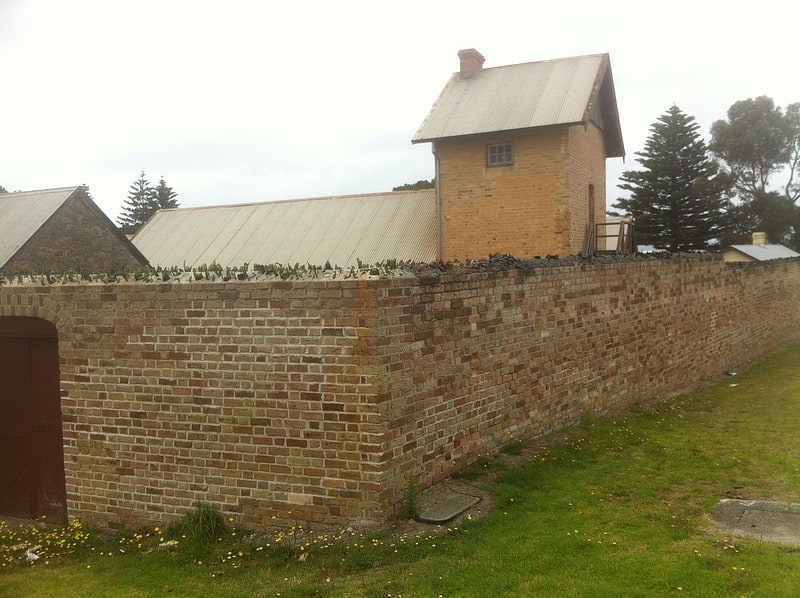
Gaol in Albany, Australia. Albany Convict Gaol also known as the Old Gaol is a restored gaol that operates as a museum in Albany, Western Australia.[2]
Address: 267 Stirling Terrace, 6330 Albany
Memorial Park Cemetery
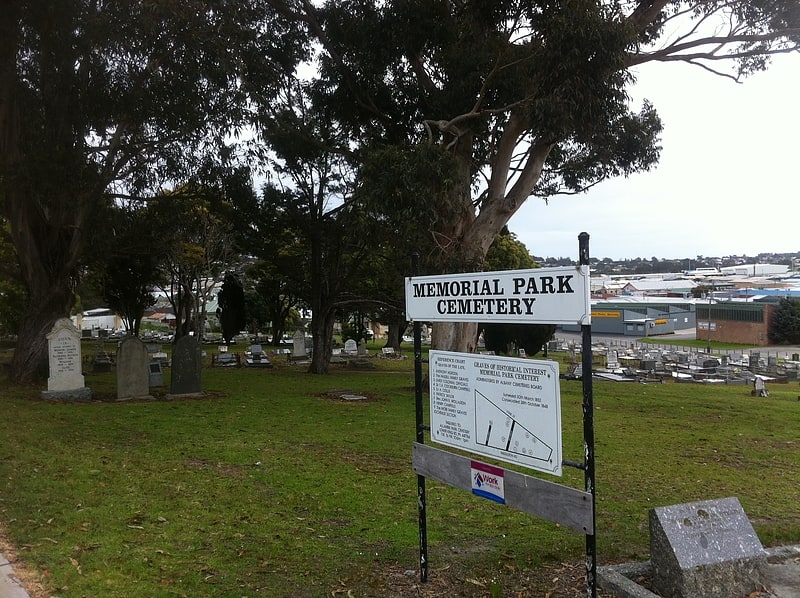
Memorial park. Memorial Park Cemetery also known as Pioneer Cemetery and Old Albany Cemetery is a cemetery located along Middleton Road in the city of Albany in the Great Southern region of Western Australia.
It was constructed in 1836 and is the first consecrated cemetery in Western Australia, gazetted in 1840 as a public burial ground to provide for the needs of a growing community. It was closed as a public cemetery in 1959, with a few burials being held there until 2000 and ashes placed there until 2009. Most burials now being held at Allambie Park Cemetery. It is thought to be the longest serving public cemetery in Western Australia.
The hillside cemetery occupies an area of approximately 2.5 hectares (6 acres) and is divided into demoninational sections containing a total of approximately 5,000 graves. It is composed of two parts, the upper cemetery and the lower cemetery, separated by Middleton Road. Easily accessed by pedestrians the site has a number of mature native and exotic trees and a range of diversity, style and age of memorials and grave fittings on the plots.
Classified by the National Trust in 2000, the cemetery was listed on the permanent register of the Heritage Council of Western Australia in 2003.[3]
Patrick Taylor Cottage

Museum in Albany, Australia. Patrick Taylor Cottage, also referred to as Patrick Taylor Cottage Museum, is a museum in Albany in the Great Southern region of Western Australia. It the oldest surviving dwelling in Western Australia.[4]
Address: 39 Duke Street, Albany
Anzac Peace Park
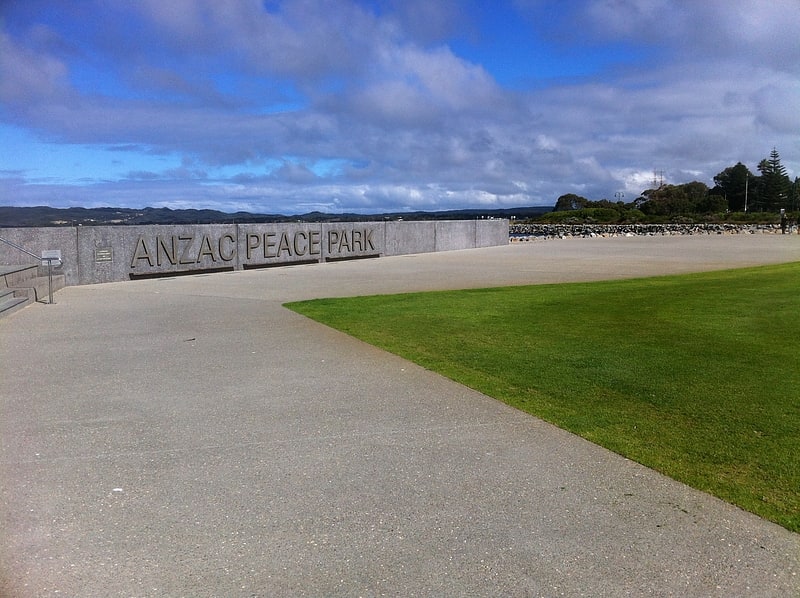
Park in Albany, Australia. ANZAC Peace Park is a park in Albany in the Great Southern region of Western Australia. It is located at the foot of the hill where York Street meets Princess Royal Drive.
The park opened in 2010, and it is designated to commemorate the departure to the war front of soldiers who served in the Australian and New Zealand Army Corps (ANZAC) during World War I.[5]
Lake Seppings
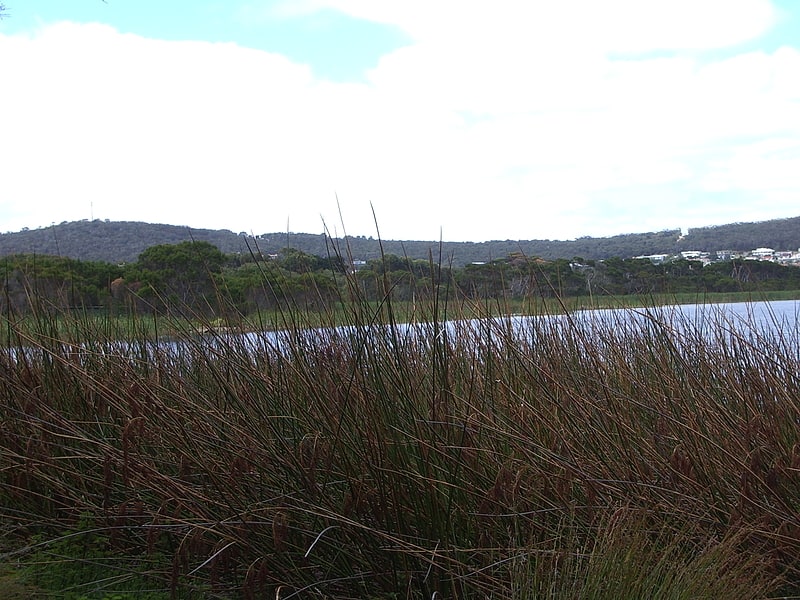
Lake in Australia. Lake Seppings is a freshwater lake located within the city of Albany in the Great Southern region of Western Australia.[6]
Albany Marina
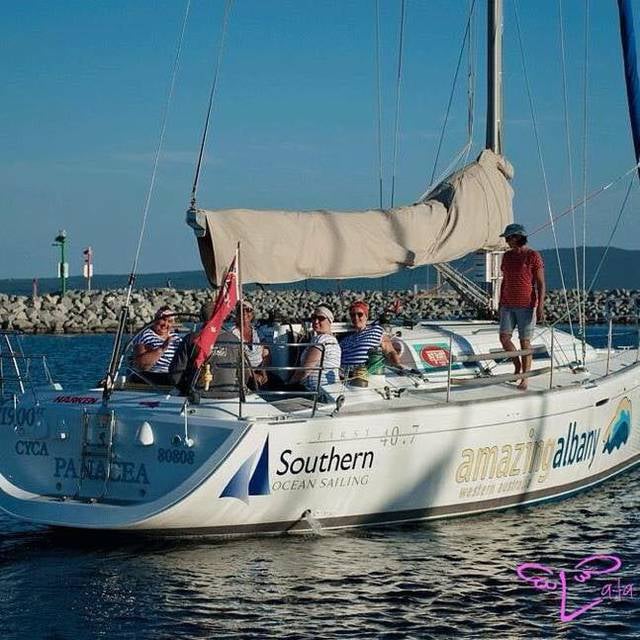
Sailing, Marina
Address: Toll Place, Albany
Scots Uniting Church
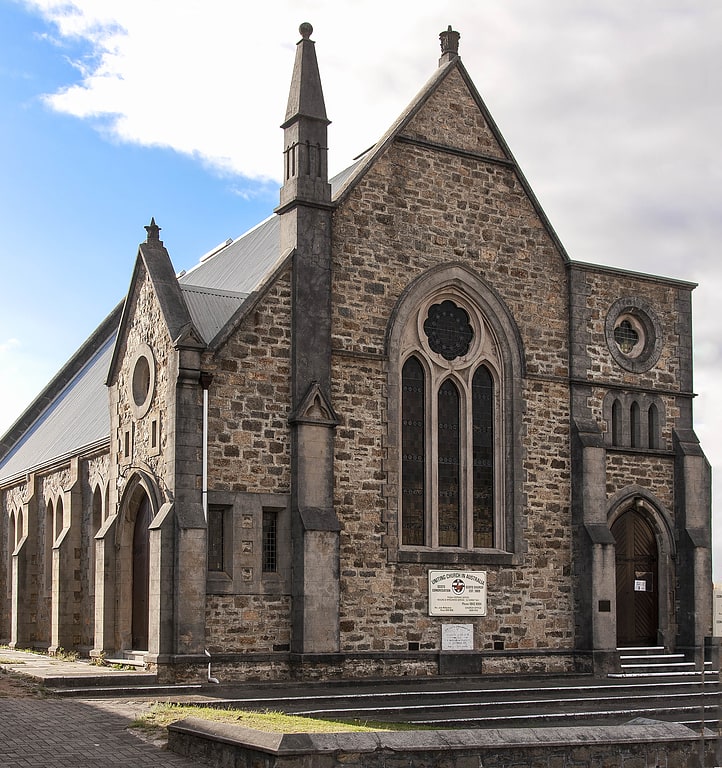
Scots Uniting Church, originally known as the Scots Presbyterian Church, is a church in Albany in the Great Southern region of Western Australia.
The church is located on York Street the main street through the centre of Albany. It is almost opposite St John's Anglican Church, giving a quiet atmosphere along the busy street.
Built to a Victorian Academic Gothic style, it is mostly constructed of finely crafted local granite and topped with a corrugated iron roof. The church has a strongly gabled form with rendered buttresses and heavily timbered doors. Originally a Presbyterian church, it was the third Presbyterian congregation in Western Australia, commencing in January 1889. Services were originally held in the Albany Town Hall and the Penny Post buildings until the church was completed. The Melbourne architect Evander McIver was asked to draw up plans and W. Sangster was contracted to complete the construction. The foundation stone was laid in November 1891, with the building completed and opened in March 1892. The total cost of the building was £1416.
In 1969 a hall, kitchen, vestry and two rooms were added to the building and constructed from brick.
The name of the church was changed in 1977 when the Presbyterian church amalgamated with other churches to form the Uniting Church in Australia.[7]
Ellen Cove Jetty
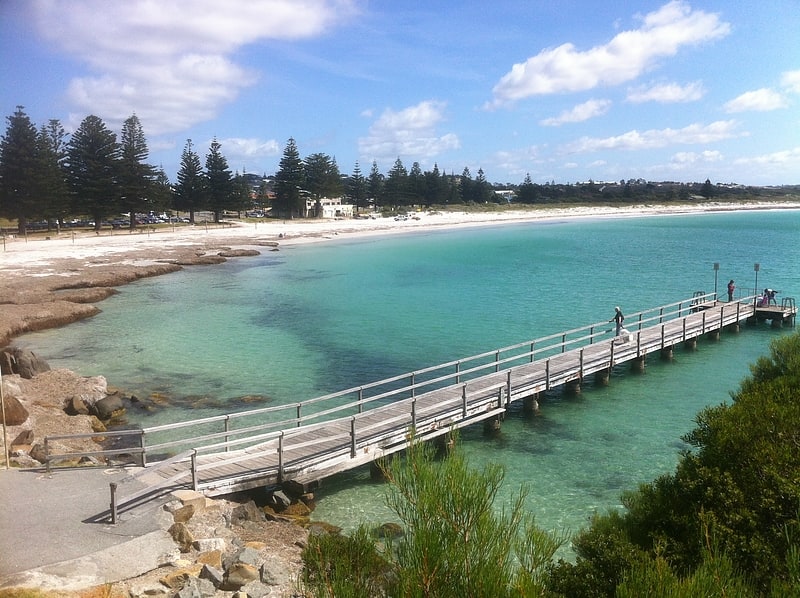
Ellen Cove Jetty also known as Middleton Beach Jetty is a jetty found at the southern end of Middleton Beach in King George Sound in Albany in the Great Southern region of Western Australia.
Work commenced on the jetty with piles being driven into the sand bed at Ellen Cove in late 1899; construction was completed in 1901, at a cost of £150.
The jetty served in the transport of goods and people of Albany. It is now primarily used for recreational purposes.
It is constructed from reinforced concrete and wood, 15 concrete piles set at regular intervals with wooden decking spanning the piles. The jetty has been rebuilt several times with no evidence that any of the original structure remains.
Both the jetty and the mature Norfolk Island pine trees along the shoreline were listed with the Heritage Council of Western Australia in 2000.
The Middleton Beach shark barrier was built in 2016 enclosing the waters around the jetty.[8]
Eyre Park
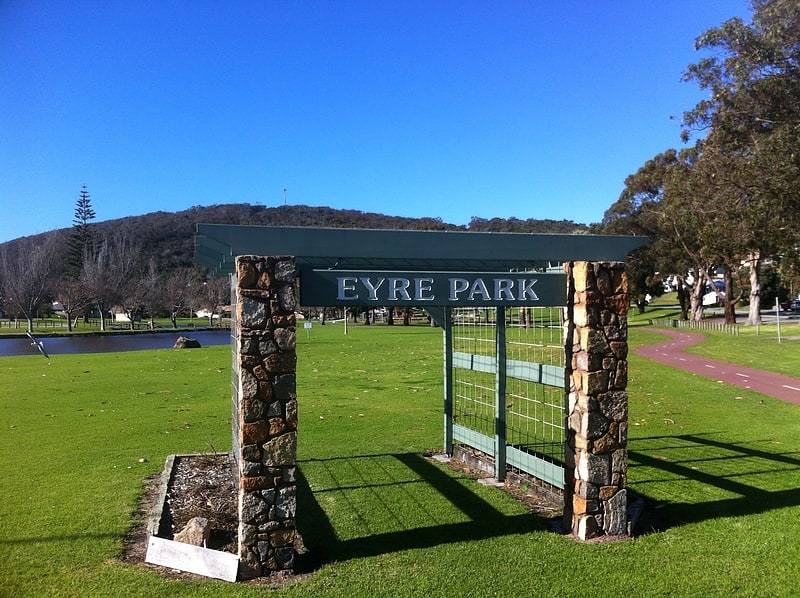
Park in Middleton Beach, Australia. The Eyre Park is a park in Middleton Beach in Albany in the Great Southern region of Western Australia.
The park is bounded by Adelaide Crescent, Middleton Road and Garden Street. It has large open spaces, lakes, gazebos, barbeques, public toilets, children's play area and a basketball court.
The park was designed by Harry Baxter of South Perth who won a competition held by the Albany Municipal Council including a £50 prize. The competition was held in 1946 and Baxter's layout for Eyre Park envisioned most of the area being occupied by an ornamental lake, with provision for gardens and sporting facilities on other portions.
The Middleton Beach Progress Association proposed that tennis courts, a bowling and croquet lawns with pavilion be established on a portion of the park.
By 1948 work was in progress with sandhills being cleared near the beachfront for parking being used to reclaim land at Eyre Park. Bulldozers also continued clearing land within the park.
Play equipment in the park was upgraded in 2016 to include a flying fox, swings, climbing ropes, log rocker, stepping stumps and other items. A bird hide is also planned along the edge of the lake.[9]
Kalgan River
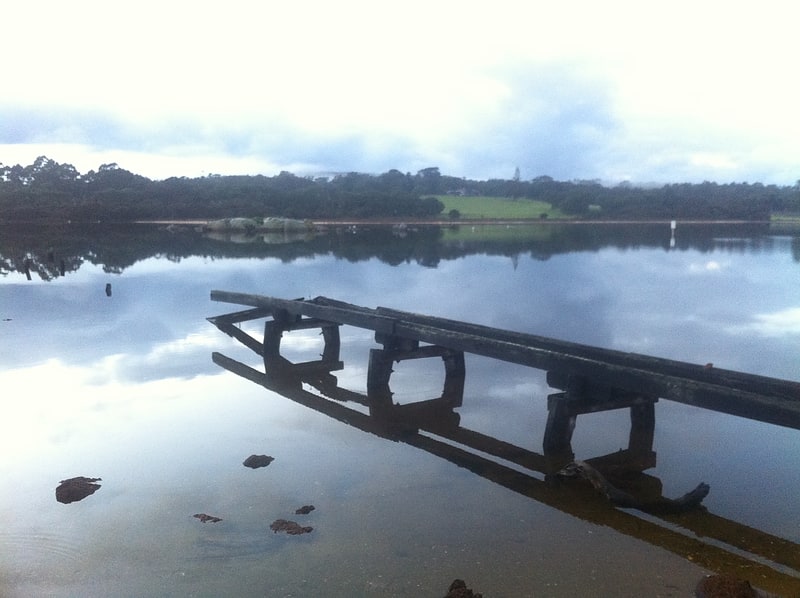
Government Jetty, also known as the Kalgan River Jetty or the Fruit Landing, is a heritage listed structure located on Nanarup Road on the Kalgan River near Albany in the Great Southern region of Western Australia.
The jetty was built from 1906 to 1908 and is representative of the development of the Lower Kalgan Bridge. The jetty was intended as a berthing spot for lighters to off‑load goods for the district's new settlers. It was later used as a delivery point for timber used to build the bridge. The jetty once had rail lines on it so that a trolley could be used to transfer materials from the barges delivered them from upriver. It was also used to land equipment such as wooden stave and cast iron pipes, for the construction of the town water supply line from Two Peoples Bay in 1914.
The jetty was also used by tourist vessels, Messrs Armstrong and Waters used it to tie up their steamer, Silver Star, after her run from Albany boarded with sightseers. From there two motor launches took the passengers further up the river to Killarney.
The finger jetty had a T-shaped head was constructed using timber pylons and decking with iron fastenings. It is currently in a poor condition with the last 10 metres (33 ft) having been lost apart from parts of two pylons.[10]
Address: 247 Nanarup Rd, Albany
Residency Museum
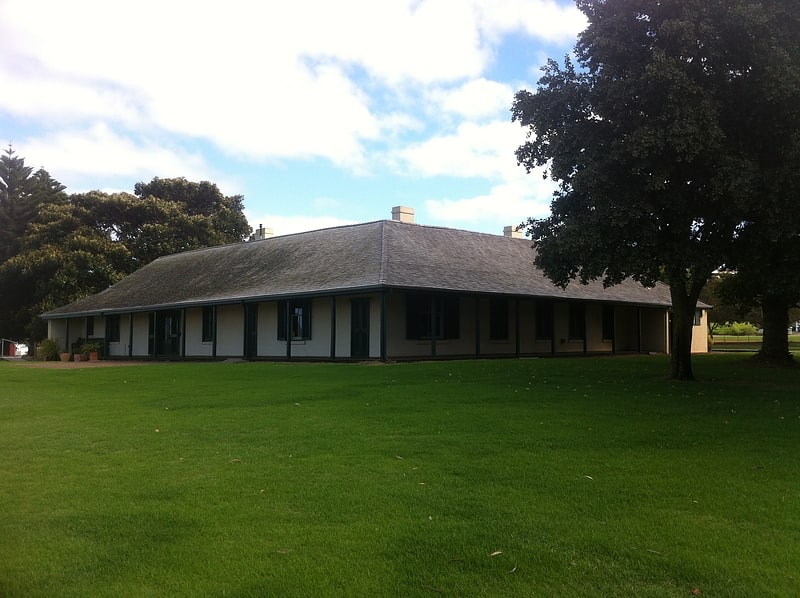
The Residency Museum, also referred to as the Residency Building, is an exhibition space at the Museum of the Great Southern in Albany in the Great Southern region of Western Australia.[11]
Wesley Church
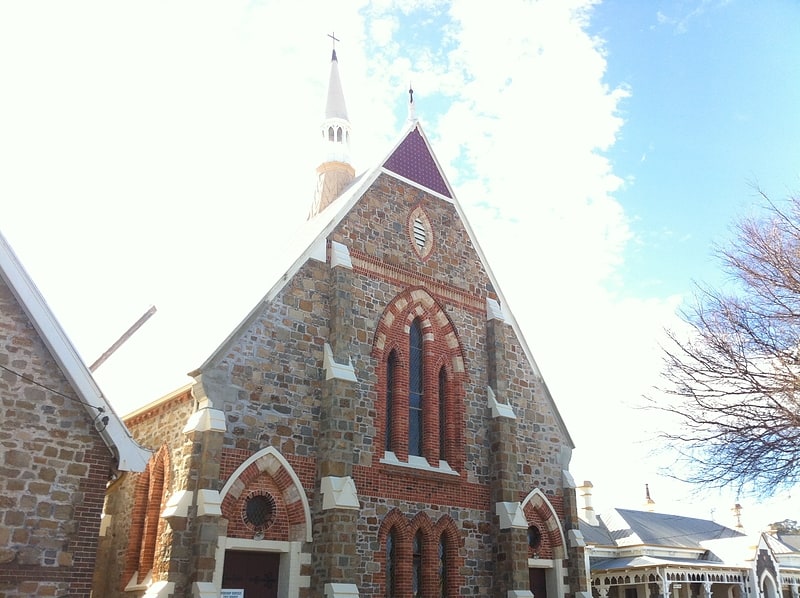
Wesley Church is a Uniting Church located on Duke Street overlooking Princess Royal Harbour in Albany in the Great Southern region of Western Australia.
Initially known as the Wesley Methodist Church it was built in a late Victorian style in 1890 at a cost of £2,695. The church has walls of brick and local granite with elaborate brick window surrounds. It also features gothic elements such as pointed arched entrances, a tall spire and pointed arched windows. The manse was built on the eastern side of the church in 1903 at a cost of £1,250 in a matching architectural style. Both buildings were funded by the Robinson family who held large commercial, land and legal interests in both Albany and Perth.
The complex, consisting of the church, hall and manse are heritage listed. The hall was built first in 1863 and then replaced in 1891, now known as Albert Hall. The church was opened the same year after replacing an earlier building, parts of which were incorporated into the hall.
The church is set close to the road with a symmetrical facade, a tower and spire. It has a steeply pitched roof, parapeted gable and wall buttresses. The stone masonry is finished with brick trim. The hall sits next to the church also has a symmetrical facade and a steeply pitched roof that includes a row of vents. It has a central arched doorway and five centred flat-topped windows above the door. The manse has a symmetrical façade, stone construction with painted brick quoining around windows and doors. There is a central portico with arched entrance, a verandah with decorative timber posts and frieze. The main roof is hipped and topped with four distinctive chimneys.
In 1977 the Methodist Church and the Presbyterian Church of Australia merged to form the Uniting Church of Australia.[12]
Vancouver's Cairn
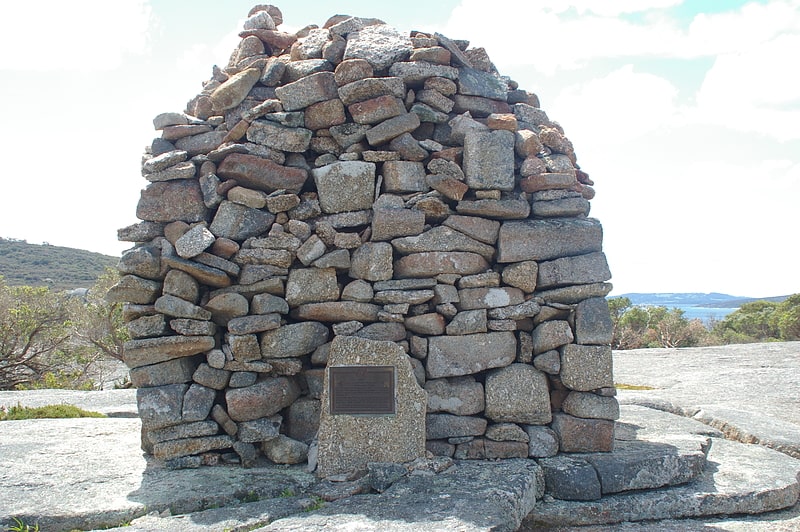
Vancouver's Cairn is a cairn located on Point Possession, Vancouver Peninsula, overlooking Princess Royal Harbour approximately 5 kilometres south of Albany in the Great Southern region of Western Australia.
The cairn commemorates the landing of George Vancouver in 1791. Vancouver was sailing to America when he entered and named King George Sound. He stayed a short while before departing to the east.
At the top of a high rocky point, the monument is of freestone and 1.8 metres (6 ft) in height. It was constructed between 1791 and 1972, was classified by the National Trust in 1977 and was placed on the Register of the National Estate in 1980.[13]
Albany Wind Farm
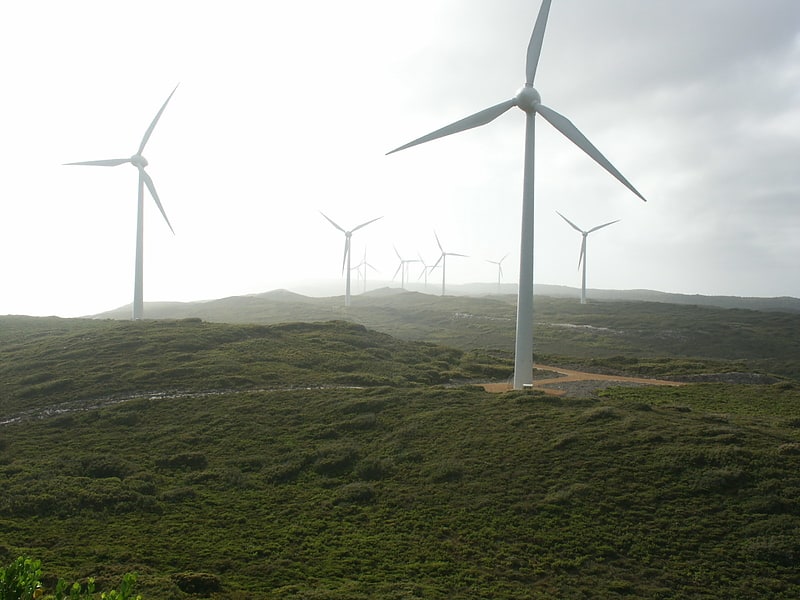
Tourist attraction in Sandpatch, Australia. Albany wind and Grasmere farms are two wind power stations near Albany, Western Australia, owned by Bright Energy Investments. They are adjacent and are often considered a single facility. They have 18 wind turbines, with a maximum generating capacity of 35.4 MW of electricity. The original Albany Wind Farm was commissioned in October 2001, after ten years of planning. The wind farm has the capacity to produce 80 per cent of the electricity requirements of Albany.
Originally commissioned in 2001 the farm was the largest of its kind in Australia. The farm originally had 12 wind turbines, with 6 extra turbines installed in 2011 as the Grasmere Wind Farm. The original Albany Wind Farm turbines are ENERCON model E66, each with three 35 metres (115 ft) long blades made from fibreglass and kevlar (making them very flexible in order to withstand any conditions) and are fitted to 65 metres (213 ft) towers. The nose cone which the blades attach to weighs around 14 tonnes. At the time of construction these turbines were the largest installed in the southern hemisphere. The turbines operate automatically, with the three blades adjusted to make best use of power output from any wind direction or strength. They have been designed to withstand the strongest winds likely in Albany and incorporate special lightning protection. Each turbine has a rating of 1.8 MW and is able to produce electrical energy at wind speeds of 7–130 kilometres per hour (4–70 kn) at which the turbines are shut down. Maximum output is achieved at a wind speed of 50 kilometres per hour (27 kn). The 6 new turbines installed in 2011 are ENERCON model E70 with a rating of 2.3 MW. The turbines were made in Germany.
The Albany and Grasmere wind farms are situated on the coast about 12 kilometres (7 mi) south-west of the city. They are in an elevated position at approximately 80 metres (262 ft) above the Southern Ocean. The height and locality is designed to maximise exploitation of local wind conditions, and combined with the short distance to the main electricity transmission system make this an outstanding wind farm site.
The farms also acts as a tourist attraction in Albany. When built A$200,000 was spent on board walks, viewing towers, interpretive displays and picnic areas on and around the site. The road to the site underwent a A$400,000 upgrade for better access for visitors. The Bibbulmun Track also traverses the site and had to be re-aligned toward the cliffs and stabilized.[14]
Address: OT 8141 Sand Patch Rd, Sandpatch, Albany
Albany House

Historical landmark in Albany, Australia. Albany House is a heritage listed building located on the corner of Stirling Terrace and York Street overlooking Princess Royal Harbour in Albany in the Great Southern region of Western Australia.
The building was originally constructed as the Union Bank of Australia building, and completed in 1884. The banking chamber occupied the ground floor while the manager's residence took up the first floor.
The two storey building was built in the Victorian Regency style; it is constructed from load-bearing masonry that has been rendered and painted. A rendered plinth at the base of the building is continuous around the main facade and is deepest at the truncated corner as the site slopes to the south. A single storey wing extends from the western side to the boundary with the London Hotel. The building has a dominant square form with a truncated corner, where the main entrance is located, at the intersection of Stirling Terrace and York Street. A decorative frieze stringcourse is found between the ground and first floors with further horizontal mouldings. The two street facades are identical and broken into bays by the pairing of the arched windows. The north facing balcony has timber flooring and a balustrade of cast iron panels. The building is topped with corrugated iron roofing concealed behind a parapet. Chimneys with moulded tops and a flagpole at the south east corner top the building.
A branch of the Union Bank was opened in 1878 by the General Manager, John Franklin McMullen. The Commercial and National Banks both also had branches in the town. McMullen then acquired the present site in 1879. With the construction of the Great Southern Railway and the economic future of Albany looking secure planning started to construct new premises.
The building was designed by architect George Charles Inskip in 1884. Inskip had also designed the Union bank buildings in Perth, Fremantle. Roebourne and Geraldton. Tenders for the Albany building were called for later the same year with the foundation stone laid in August. It was built by Charles Keyser, who also constructed Vancouver House, another heritage listed building further down Stirling Terrace.
In 1945 the block was subdivided and the land behind the building fronting York Street was sold. The building had some renovations in 1950. The Union Bank and the Bank of Australasia merged in 1951 to form the Australian and New Zealand Bank. In 1970, the bank then took over the English, Scottish and Australian Bank and became the Australia and New Zealand Banking Group Ltd. and eventually moved to premises on Albany Highway. In 1973 the building was completely vacated and new premises were opened in Peel Place. Albany House was sold in 1975 to the Wyness family, then in 1976 to the Bellemore family, who renovated the building. QBE Insurance used the ground floor as offices in 1999.
In 2005 the building received a A$5,000 grant from the state government to assist with the cost of preparing a conservation plan.[15]
Vancouver House
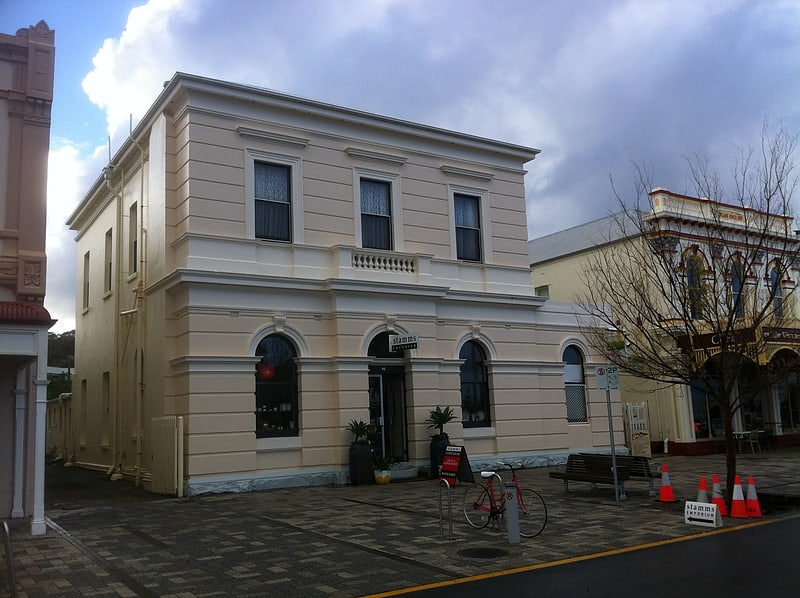
Vancouver House, also known as the National Bank building, is a heritage listed building located on Stirling Terrace overlooking Princess Royal Harbour in Albany in the Great Southern region of Western Australia.
The building is named after George Vancouver, who named King George Sound and Princess Royal Harbour and claimed the southern part of Western Australia for the British Crown in 1791.
Tenders were called for in February 1881, and the building was constructed in 1881 by local builder Charles Keyser, who also built Albany House located further along Stirling Terrace. It initially operated as a branch of the National Bank but later was used as a cafe and food store and became a guest house in 2000.
The building is of a Victorian free classical style and is part of a group of significant buildings along Stirling Terrace. It has two storeys with a single storey addition on the eastern side of the building. The symmetrical facade is divided into horizontal panels of stucco masonry. The portico entry bay has an arched doorway. The building is topped with a medium pitch corrugated iron roof with two moulded top chimneys.[16]
Alison Hartman Gardens

Park in Albany, Australia. Alison Hartman Garden, often referred to as Mokare Park, is a park on York Street in Albany in the Great Southern region of Western Australia.
The park, located near the centre of Albany, contains numerous sculptures including the statue of Mokare.
The area is situated adjacent to the Albany Public Library and the Albany Town Square. It often hosts local markets. The area was once the vegetable gardens behind the old state school, which is now the Albany District Education Centre. The gardens are named after a long-serving teacher at Albany State School, Alison Edith Hartman (1906-1978). She was the daughter of John Hartman, who built Albany War Memorial, and she was the Principal of Albany Primary School from 1935 to 1967.
The gardens contain two large Norfolk Island pine trees and a Quercus robur tree that date back to the 1890s along the southern edge. The pines are decorated every Christmas season. The statue of Mokare was erected in 1977 as a memorial to the Noongar man who helped he early settlers maintain a peaceful coexistence with the traditional owners. A series of community sculptures were set around a granite outcrop in the gardens in 1989. These include large, century-old timbers are from the original own Jetty that symbolise Jetty, ships loading cranes and other agricultural machinery to acknowledge the importance of shipping and agriculture in the early development of the town. A Peace Pole, featuring the message May Peace prevail on Earth, at the rear of the gardens was erected in 2011 as part of the Harmony Day celebrations.[17]
St John's Anglican Church
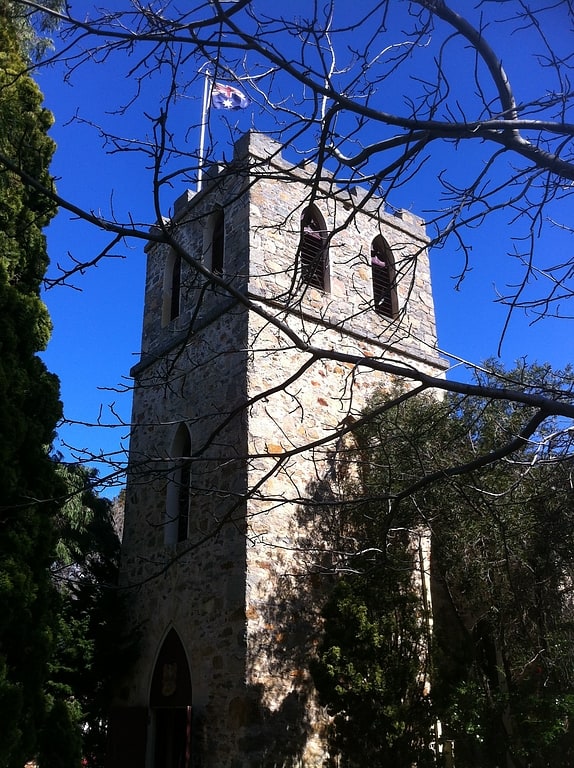
Anglican church in Albany, Australia. St John's Anglican Church, also known as St John the Evangelist Anglican Church, is a heritage-listed Anglican church on York Street in Albany, Western Australia. The church is the oldest consecrated church in Western Australia, consecrated in October 1848.[18]
Old Farm
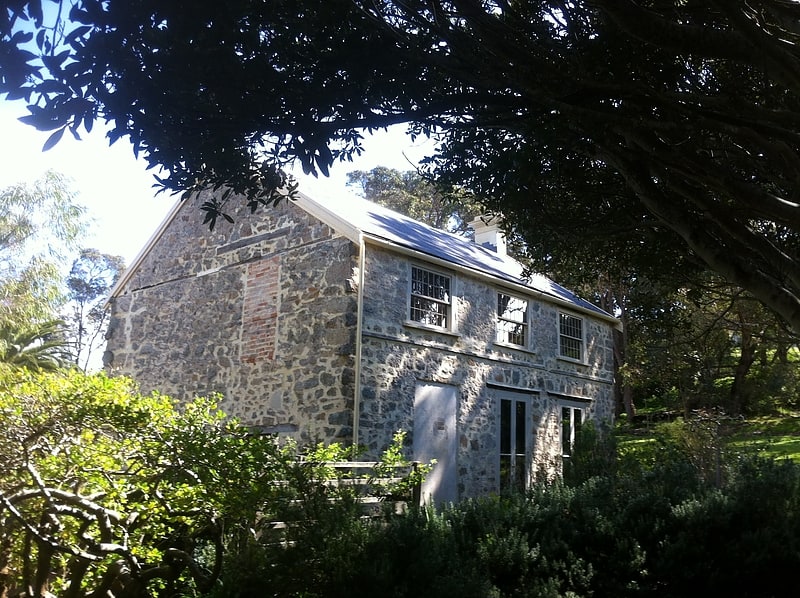
Historical landmark in Mira Mar, Western Australia. The Old Farm, also known as Strawberry Hill or Barmup is located on Strawberry Hill in the suburb of Mira Mar in Albany, Western Australia. It is known as being the first farm in Western Australia.
The hill on which the property is situated rises to a height of 237 feet (72 m) and is a spur of Mount Clarence. The soil is a mixture of clay and gravel with rich black loam on the lower side.
The farm was initially established in 1827 as a government farm when the first Europeans settled at King George Sound. Edmund Lockyer, Alexander Collie and John Lawrence Morley selected the site as a government farm. Originally it occupied an area of 1,536 acres (622 ha) but only 6 acres (2 ha) remain today. The next three commandants of the settlement, Captain Wakefield, Lieutenant Sleeman and Captain Collet Barker, followed Lockyer's plan of continuing to develop the farm.
Alexander Collie was appointed Government Resident of Albany in 1831 and moved into a wattle and daub cottage situated on the farm. He named the property Strawberry Hill after the small plot of strawberries he was cultivating. Collie retired in 1832 and his successor was D. H. Macleod but it was the farm superintendent John Lawrence Morley who handed the property onto Richard Spencer.
Spencer was appointed as Government Resident in 1833; he acquired the farm and resided there with his wife, Ann, and his ten children. Spencer arranged for the erection of a granite two-storey building at the rear end of the original wattle and daub structure at a cost of £100. The garden was now well established and producing blood oranges, raspberries, grapes, asparagus, figs and almonds. The first visitors to stay in the new building included Charles Darwin and Captain Robert FitzRoy, of HMS Beagle.
The old thatched roof wattle and daub part of the main residence burned down in 1870. A second cottage was built by Charles Miner in the same year.
Francis Bird, the Chief Architect of Western Australia, acquired the property in 1889 and changed the name from Strawberry Hill to the Old Farm. His family retained ownership of the farm until the 1930s.
The site lay derelict for many years until purchased by the Federal Government in 1956 and it was then vested in the National Trust of Australia in 1964. Conservation work commenced shortly afterward and it was later opened to the public.[19]